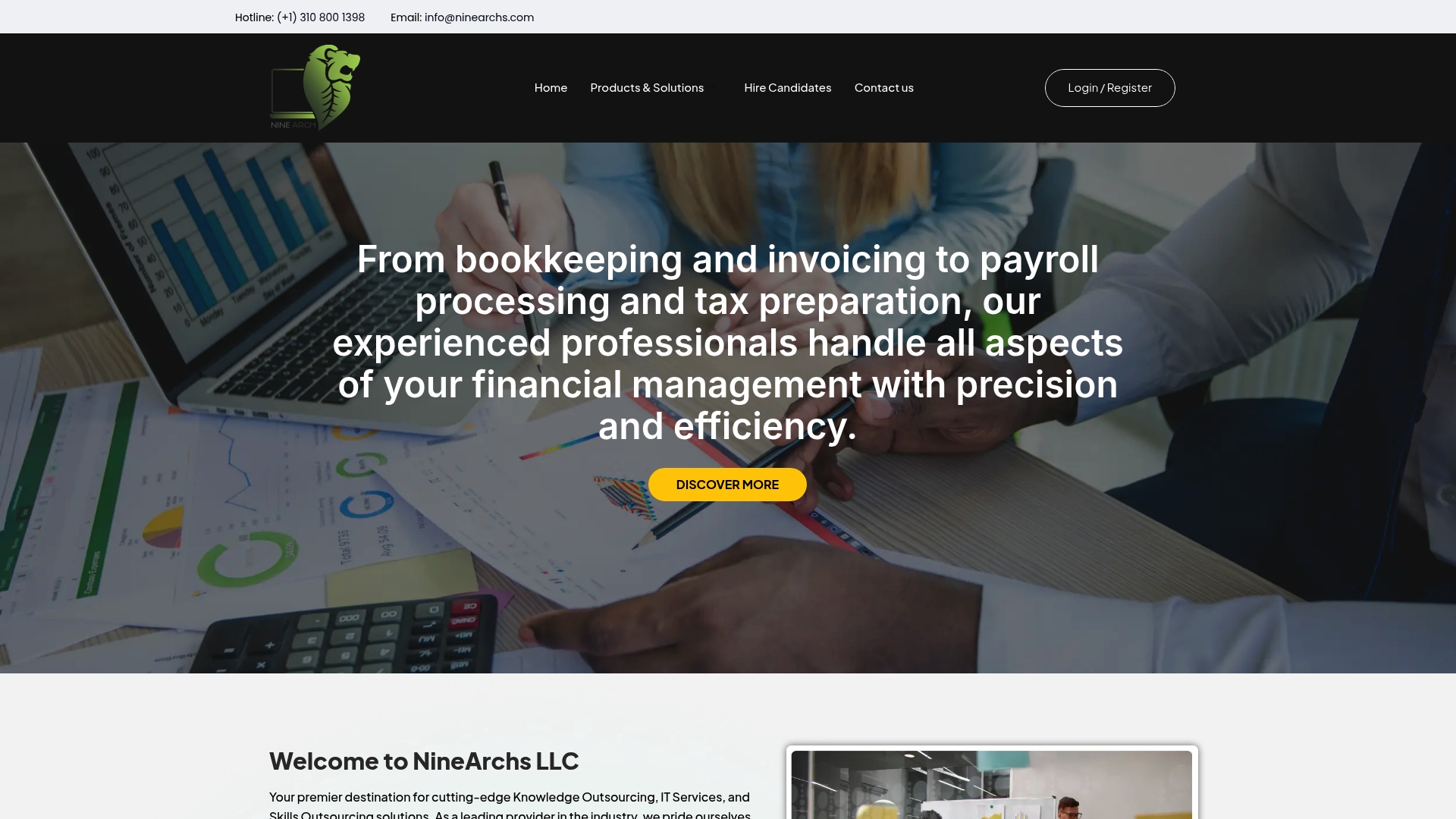Nearly 70 percent of companies say outsourcing helps them stay more competitive. With business challenges growing more complex each year, understanding how to outsource effectively can be the key to unlocking new growth. Choosing the right approach turns outsourcing from a risky gamble into a powerful way to strengthen your business, improve efficiency, and add specialized skill sets you may not currently have.
Step 1: Assess Internal Processes and Outsourcing Needs
Before diving into business process outsourcing, you need a crystal clear understanding of your organization’s internal workflows and strategic objectives. This initial assessment determines whether outsourcing will genuinely enhance your operational efficiency or become an expensive distraction.
Start by mapping out your current processes meticulously. Walk through each department and document how work actually gets done—not how it theoretically should happen. Look for repetitive tasks, bottlenecks, and areas where specialized external expertise could make a meaningful difference. According to research from organizational studies, successful outsourcing begins with building internal “dynamic capabilities” that help you sense operational challenges and integrate external resources seamlessly.
Your assessment should answer critical questions: What core competencies define your business? Which processes are mission critical versus potentially outsourceable? Where do skill gaps exist that external talent could fill? Understand why business owners outsource for strategic growth by first understanding your own operational landscape.
Carefully evaluate your existing technological infrastructure and workforce skills. Some processes require deep institutional knowledge that might be challenging to transfer. Others demand specialized technical expertise that external providers can deliver more efficiently. Medical device industry research suggests organizations must develop strong “absorptive capabilities” to effectively integrate outsourced functions.
Pro Tip: Document your current process metrics before outsourcing. You will need baseline performance indicators to measure future improvements.
Remember that outsourcing is not about reducing costs but enhancing strategic capabilities. Your next step involves identifying potential outsourcing partners who can truly complement your organizational strengths.
Step 2: Select Suitable Outsourcing Partners
With your internal processes mapped out, you are now ready to find the perfect outsourcing partner who can transform your operational capabilities. This step goes far beyond simple price comparisons—it is about discovering a strategic ally who can genuinely accelerate your business performance.
Contemporary outsourcing vendor selection has evolved from traditional cost-focused approaches to more holistic strategic evaluations. According to professional research, successful partner selection now requires comprehensive frameworks that examine governance models, ecosystem understanding, and long-term business alignment.
Start by creating a detailed evaluation matrix that goes beyond basic technical capabilities. Look for partners who demonstrate workforce agility, multi-skilled talent pools, and customer-driven innovation capabilities. Explore current IT outsourcing trends to understand what cutting-edge providers can offer your organization.
Research suggests sustainability and adaptability are critical selection criteria. Assess potential partners not just on their current skills but on their capacity for continuous learning and technological adaptation. Can they quickly scale resources? Do they invest in worker training? Can they provide flexible delivery models that match your evolving business needs?
Pro Tip: Request comprehensive references and conduct thorough due diligence. A low-cost provider might create expensive complications if they cannot truly integrate with your operational culture.
Your goal is finding a partner who feels like an extension of your own team—not just a transactional service provider. The right outsourcing relationship should feel collaborative, transparent, and aligned with your strategic vision.

In the next phase, you will develop a robust partnership framework that sets clear expectations and performance metrics for your selected outsourcing team.
Step 3: Structure Effective Outsourcing Agreements
Now that you have identified your ideal outsourcing partner, it is time to create an agreement that protects your interests and sets the stage for a successful long-term collaboration. This step is about crafting a comprehensive contract that goes far beyond basic service descriptions.
Research indicates that effective agreements must assess total cost of ownership comprehensively. This means looking beyond immediate pricing to understand the complete financial landscape. Learn more about outsourced IT strategies to grasp the nuanced financial considerations of technology partnerships.
Your contract should include clear performance metrics that align with your strategic objectives.
According to professional studies, successful outsourcing configurations require detailed agreements with flexible pricing models that can adapt to changing business needs. This approach helps drive innovation and sustainable performance.
Pay special attention to critical contractual elements such as scope-change protocols, termination conditions, and performance-based incentive structures. Include robust risk assessment clauses that cover potential geopolitical shifts, compliance requirements, and technological disruptions. These provisions protect your organization and create a framework for transparent collaboration.
Pro Tip: Negotiate contracts that reward innovation and continuous improvement rather than just meeting minimum performance standards.
Remember that a great outsourcing agreement is not about creating restrictive rules but establishing a partnership that can evolve with your business. Your contract should feel like a roadmap for mutual success rather than a static legal document.
In the next phase, you will develop a comprehensive onboarding and integration strategy to ensure smooth collaboration with your new outsourcing partner.
Step 4: Implement Seamless Transition and Integration
With your outsourcing agreement finalized, you are now entering the most critical phase—transforming your strategic plan into operational reality. This step demands meticulous planning, clear communication, and a methodical approach to transferring responsibilities and knowledge.
Professional research recommends starting with pilot engagements that allow you to test operational compatibility before full-scale implementation. These controlled trials provide a low-risk environment to assess vendor performance, identify potential integration challenges, and validate your outsourcing strategy. Explore comprehensive IT outsourcing strategies to understand best practices for smooth operational transitions.
Begin by establishing a centralized transition management team that includes key stakeholders from both your organization and the outsourcing partner. This team will be responsible for creating detailed transition roadmaps, managing knowledge transfer processes, and conducting regular weekly reviews to track progress and address emerging challenges.
Focus on comprehensive documentation and training protocols. Your goal is to ensure that the outsourcing team fully understands not just the technical aspects of their tasks but also the cultural nuances and strategic context of your business. Develop detailed standard operating procedures, conduct extensive knowledge transfer sessions, and create robust communication channels that facilitate real-time collaboration.
Pro Tip: Implement a phased transition approach where critical but non-essential processes are transferred first, allowing your team to build confidence and refine the integration strategy.
Remember that successful integration is about more than just transferring tasks—it is about creating a unified team that shares common goals and understands each other’s strengths. Invest time in building relationships, fostering mutual understanding, and creating an environment of collaborative learning.
In the next phase, you will establish continuous performance monitoring and feedback mechanisms to ensure your outsourcing partnership delivers sustained value and drives ongoing organizational improvement.
Step 5: Monitor Performance and Ensure Quality
Your outsourcing journey does not end with implementation—it enters a critical phase of continuous monitoring and strategic refinement. This step transforms your outsourcing relationship from a static agreement into a dynamic partnership that consistently delivers value.
Professional research recommends establishing key performance indicators that directly connect to your strategic objectives. These metrics go beyond basic operational measurements and provide a holistic view of your outsourcing partnership’s effectiveness. Understand comprehensive IT outsourcing performance management to develop robust evaluation frameworks.
Create a comprehensive performance dashboard that tracks critical metrics such as error rates, turnaround times, customer satisfaction scores, and strategic alignment. These indicators will help you objectively assess your outsourcing partner’s contributions and identify areas for improvement. Regular monitoring through detailed reports, periodic audits, and stakeholder surveys ensures transparency and accountability.
![]()
Define clear service-level agreements that outline precise quality benchmarks and expectations. Your monitoring approach should include both quantitative metrics and qualitative assessments that capture the nuanced aspects of collaboration. Implement collaboration tools that facilitate real-time communication and provide immediate visibility into ongoing work processes.
Pro Tip: Develop feedback loops that allow both your organization and the outsourcing partner to share insights, address challenges, and continuously improve performance.
Remember that effective performance monitoring is not about micromanagement but about creating a culture of mutual growth and continuous improvement. Approach these evaluations as collaborative opportunities to refine your partnership and drive organizational excellence.
In the final phase, you will explore strategies for scaling and optimizing your outsourcing engagement to unlock long-term strategic advantages.
Here’s a comparison of each key step in the outsourcing process:
| Step | Main Objective | Key Focus Areas |
|---|---|---|
| Assess Internal Processes | Identify outsourceable tasks | Process mapping Skill gap analysis Core competency review |
| Select Partners | Find strategic partners | Evaluation matrix Sustainability Cultural fit |
| Structure Agreements | Set clear terms and metrics | Performance metrics Flexible pricing Risk clauses |
| Implement Transition | Enable smooth handover | Transition teams Knowledge transfer Pilot projects |
| Monitor Performance | Ensure quality and value | KPIs Dashboards Feedback loops |
Elevate Your Outsourcing Journey with Trusted Experts
You have just seen how critical it is to thoroughly assess your internal processes, select the right partners, and set measurable goals for outsourcing. If you feel concerned about missing hidden inefficiencies, struggling to find truly agile teams, or worried that your outsourcing provider will not align with your strategic goals, you are not alone. Common frustrations like unclear performance metrics or limited flexibility can stall business growth. That is where NineArchs LLC stands apart. Our tailored remote workforce solutions are designed specifically to cover each phase you have read about. From process mapping to seamless integration, our proven frameworks ensure you avoid expensive missteps and get measurable value from day one. Explore how our business process outsourcing services deliver not just cost savings but a measurable boost to your productivity and innovation.

Ready to leave uncertainty behind and achieve reliable growth? Connect with NineArchs LLC to secure a partner who matches the expertise and reliability described in our step-by-step guide. Take the next step and see how solutions like virtual assistance, data analysis, and custom development allow you to streamline operations and focus on core objectives. Visit NineArchs now and transform the way your business achieves results.
Frequently Asked Questions
How can I assess my internal processes before outsourcing?
Assess your internal processes by carefully mapping out how work is currently performed in each department. Document the workflows, identify repetitive tasks, and recognize bottlenecks to determine where outsourcing can provide the most impact. Focus on areas where external expertise might fill skill gaps or enhance operational efficiency.
What criteria should I use to select outsourcing partners?
When selecting outsourcing partners, consider their technical capabilities, adaptability, and alignment with your business goals. Create a detailed evaluation matrix that includes factors like sustainability, workforce agility, and the potential for innovation to find a partner who complements your strengths.
What key elements should be included in outsourcing agreements?
Outsourcing agreements should clearly define performance metrics, pricing structures, and risk assessment clauses. Make sure to include comprehensive details regarding scope changes, termination conditions, and incentive structures to encourage innovation and continuous improvement in your partnership.
How can I ensure a seamless transition to an outsourcing partner?
To ensure a seamless transition, start with pilot projects that test operational compatibility before full-scale implementation. Establish a transition management team, document processes thoroughly, and schedule frequent communication to facilitate knowledge transfer and minimize disruptions during the handover.
What types of performance metrics should I monitor after outsourcing?
Monitor both quantitative and qualitative performance metrics that relate to your strategic objectives, such as error rates, turnaround times, and customer satisfaction. Create a performance dashboard to visualize these metrics and establish regular feedback loops to maintain transparency and drive continuous improvement in the partnership.
Recommended
- Understanding Why Business Owners Outsource for Growth | NineArchs
- Understanding IT Outsourcing Trends in 2025 | NineArchs
- Understanding What is Outsourced IT for Businesses | NineArchs
- Business Process Outsourcing | NineArchs
- Understanding Blogging for Business: A Key to Growth
- Complete Project Management Software for your business.










[…] a deeper understanding of strategic task selection, check out our guide to business process outsourcing success. This resource will help you navigate the complex landscape of identifying and selecting optimal […]
[…] support your strategic planning, review our guide to business process outsourcing success for additional insights into developing a robust outsourcing strategy. By meticulously defining […]